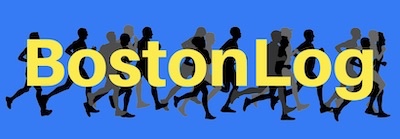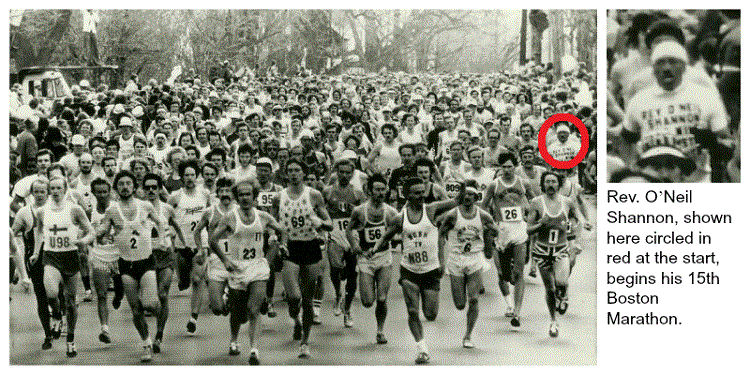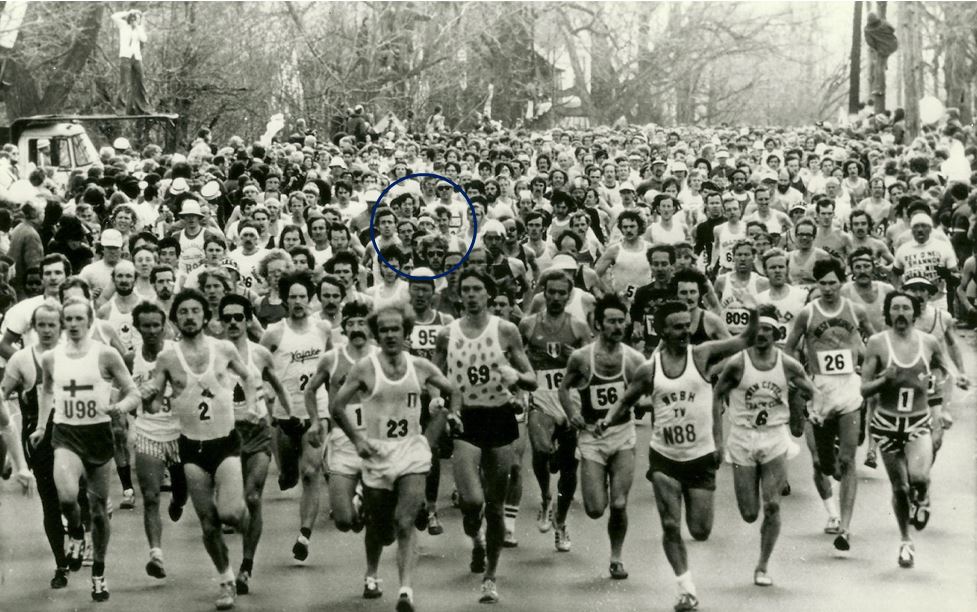
Since its inception, the Boston Marathon has been synonymous with Patriots’ Day, the Massachusetts holiday commemorating the anniversary of the April 19, 1775, Battles of Lexington and Concord, and the beginning of the American Revolutionary War. The close connection between the Marathon and this observance, combined with the rising wave of the 1970s running boom, produced a memorable race in Bicentennial Year of 1975, the 200th anniversary of the war for American independence. Four decades later that 79th Boston Marathon remains remarkable…
Pre-Race Press:
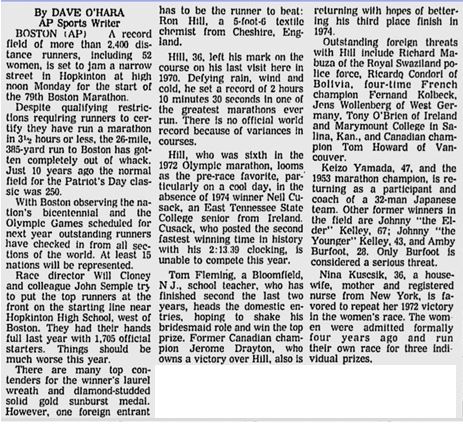
The 79th Boston Marathon, as reported the following day by the Boston Globe.
“An Incredibly Fast Race,” a retrospective look at the 1975 Boston by Ed Borsch.
Faces in the Crowd:
A short stint as a professional boxer prevented Reverand O’Neil Shannon from wearing a number as an official race entrant. Rev. Shannon was featured in a short documentary film on the 1964 race.
Click here for many more Faces in the Crowd.
Results
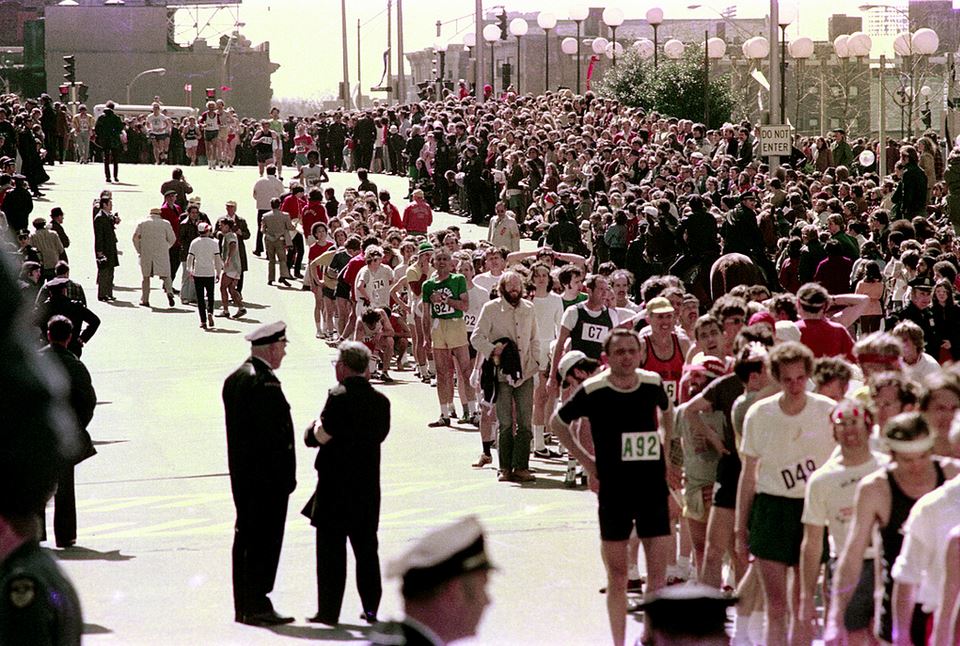
Men’s Results – 79th Boston Marathon
Places 1 through 250
Places 251 through 500
Places 501 through 750
Places 751 through 1000
Places 1001 through 1250
Places 1251 through 1500
Places 1501 through 1750
Places 1751 through 1818
Women’s Results – 79th Boston Marathon
Places 1 through 28
Photo Gallery
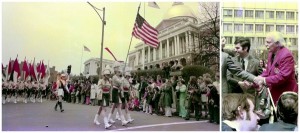 Perceptive and prolific photographer Nick DeWolf always had a camera with him, leaving behind a legacy of many thousands of pre-digital images. On April 21, 1975, he took pictures of the Patriots Day parade, then stopped for a Bicentennial concert by Arthur Fiedler and the Boston Pops, before moving on to the finish line of the 79th Boston Marathon, where he recorded an amazing series of photos of race finishers. work available on Flickr. Our thanks to the Nick DeWolf Foundation for their permission to use images from the Nick DeWolf Photo Archive to illustrate this 40th anniversary report on the 1975 Boston Marathon.
Perceptive and prolific photographer Nick DeWolf always had a camera with him, leaving behind a legacy of many thousands of pre-digital images. On April 21, 1975, he took pictures of the Patriots Day parade, then stopped for a Bicentennial concert by Arthur Fiedler and the Boston Pops, before moving on to the finish line of the 79th Boston Marathon, where he recorded an amazing series of photos of race finishers. work available on Flickr. Our thanks to the Nick DeWolf Foundation for their permission to use images from the Nick DeWolf Photo Archive to illustrate this 40th anniversary report on the 1975 Boston Marathon.
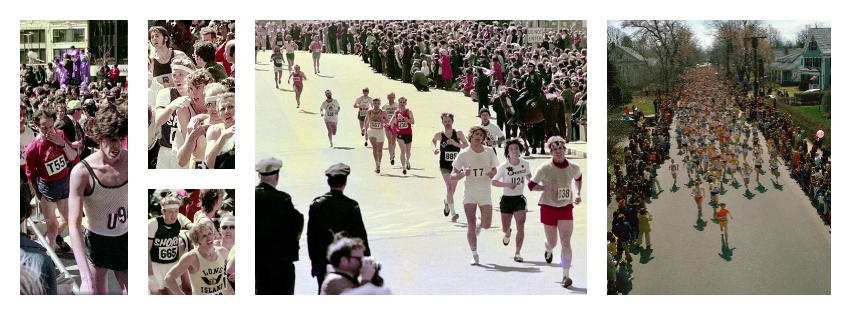 Here is how the Boston Globe reported the event the following day. (Note later four time New York and Boston champion “Boston Billy” at this stage of his career was just “Will Rodgers.”)
Here is how the Boston Globe reported the event the following day. (Note later four time New York and Boston champion “Boston Billy” at this stage of his career was just “Will Rodgers.”)
A Yankee Doodle Dandy Derby
By Jerry Nason
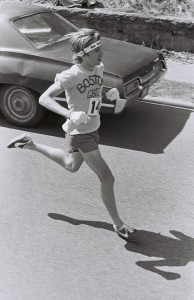 Befitting the big Bicentennial setting, a Connecticut Yankee fired another shot heard ’round the world.
Befitting the big Bicentennial setting, a Connecticut Yankee fired another shot heard ’round the world.
Will Rodgers’ capture of the Boston AA’s 79th marathon race in record time of 2:09:55 was a mind boggler, 35 seconds under Ron Hill’s super mark of 1970.
The pale, peak-nosed Wesleyan alumnus, 27, from Jamaica Plain via Hartford —an authentic outsider in the advance speculations — rode the blustery n’west tailwind to the fifth fastest clocking ever recorded globally.
He served notice on the Montreal Olympiad of next summer that the USA is still in the business of producing Frank Shorters… by fragmenting Shorter’s citizen’s record (not in the BAA) of 2:10.30.
Rodgers, striving for his master’s degree in special education at Boston College grad school while living in Jamaica Plain, led a dazzling Yankee Doodle dandy performance in a race traditionally dominated by the patter of foreign feet.
Two minutes behind him, Steve Hoag out of the Minneapolis area was runner-up, running five minutes below the fastest time of his life in 2:11:54.
Finishing off the first 1-2-3 sweep of the race by Americans in 32 years was Tom Fleming, runner-up the two previous years, but Tom raced dramatically faster this time — 2:17:05.
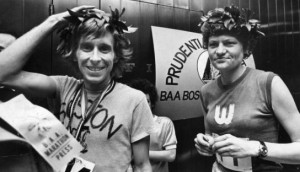
Equally brilliant in the Hers division as was Will Rodgers in the His event was Fraulein Liane Winter of Germany. This effervescent runner, who called for beer on arrival at Big Pru, had this kind of a day out of the Hopkinton-Boston race course of 26 miles, 385 yards: Winged to the finish in the fastest marathon time ever credited to a woman anywhere — 2:42:24; five minutes under Miki Gorman’s year-old record and almost 10 minutes faster than her nearest pursuer yesterday, Katharine Switzer.
Fraulein Winter simply set forth at noon and swung her mop at the other ladies at the very outset. With Will Rodgers, like Paul Revere, it was more a matter of a delayed start.
Bernie Allen, last year’s “morning glory” from England, did it again yesterday — popping out like a champagne cork with a lot of quick fizz at the start.
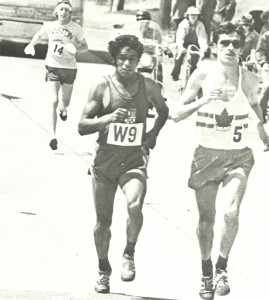
This almost decked Rodger’s game plan because he hadn’t intended to let it all out so soon in the race. And when that enigmatic and dangerous Canadian, Jerome Drayton, quickly set out after Allen, Will had no choice but to join the early chase, too.
“Drayton shook me up more than Allen,” Will confessed after he’d destroyed both. “Drayton is tough. I was surprised to see him going so fast so early. At first I didn’t recognize him. I thought of him as a smaller man.
“But when I knew it was Drayton, I knew I couldn’t let him get away from me.”
Allen, Drayton, Rodgers and the late entering Mexican, Mario Quezas, were in arm’s reach of one another into Framingham checkpoint, 6 miles, and running hard – :31.55 or 24 seconds behind Hill’s all-course record.
And Hill — destined to finish a fast fifth — was just to the rear with Richard Mabuza of Swaziland, who was beginning to feel desperate as the chill breeze bit into his bones.
So, Will Rodgers, a distant 14th man in last year’s Marathon, hung grimly onto Drayton, whose face was frozen into stern lines below his sun glasses.
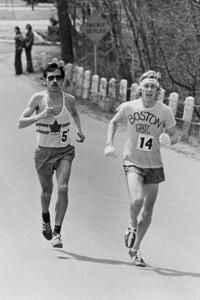 Down into Natick, two seconds behind Hill’s record now, the Drayton-Rodgers tandem fled, their strides in perfect harmony, an unusual orchestration in a marathon race.
Down into Natick, two seconds behind Hill’s record now, the Drayton-Rodgers tandem fled, their strides in perfect harmony, an unusual orchestration in a marathon race.
It wasn’t until the threshold to Wellesley Square, the halfway mark, 13.3 miles, that Will Rodgers, the Connecticut Yankee started priming his musket.
When he pulled the trigger, the race, the record, and Jerome Drayton were doomed. It was at this point, Wellesley Square that Rodgers earned his first edge on Drayton — 30 yards — and on Hill’s all- course — 11 seconds.
From thereon he simply kept getting farther ahead of everybody, and looking more and more like the Marathon’s Dave Wottle the process.
You don’t have to believe this, because it doesn’t make sense:
Only one BAA winner ever ran the last half of the course with its ominous Newton Hills faster than Will Rodgers did, 1h 5m 37s — and that as Morio Shigematsu, the Japanese, 10 years ago to the day.
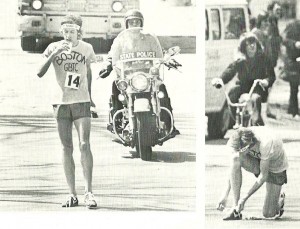
But Rodgers actually STOPPED running five times in that big, important interval — four times to accept proferred cups of water and once to secure an untied shoelace.
The guy and the day were simply unreal. At one point, only 2 ¼ miles from the finish, he was one minute and 18 seconds ahead of the record and on his way to an almost incredible 2:09:12 race.
“Heck, the time I had as it was — well, I’m incredibly happy about it,” Rodgers said.
“This is only my sixth attempt at a marathon and I’m remembering now that I was more than a mile faster today than a year ago. I didn’t even finish my first Boston attempt.”
That he fell off from 78 seconds to 35 seconds below the epic Ron Hill record of 1970 probably, for him, was more a precautionary run over the final two miles than anything else.
Billy Squires, his coach at the Greater Boston Track Club, put it this way: “Will Rodgers earned this great day out there on the training roads. He has been carrying an incredible work load — up to 140 training miles a week — for three months.”
“This is tremendously dedicated runner who had a dream and was willing to pay a heavy training price to see that dream come true.”
This, essentially, tells it all. Will Rodgers was willing to pay the price.
The pollution index on the day was favorable, the meteorology (56 degrees, n’west quartering tailwind) of assistance, and the early competition sharp and in an extremely combative mood.
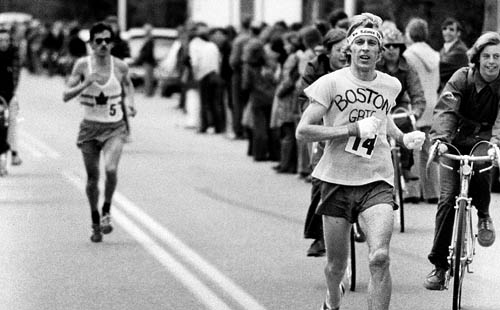
But the winning of this race — and virtually all marathon races — was largely a matter of physiological pluses and minuses: Of paying the least oxygen debt, of having banked the most glucose in the body tissues, of drawing interest on earlier investment of carbohydrates and proteins, of reaching “fatigue point” without ever making a fatal passage into “collapse point.”
This was what it was all about within the structure of Will Rodgers’ sudden and dramatic Marathon shot that was heard ’round the world.
At least seven runners in the field had speed indexes that read about equal going into the race at Hopkinton but, at the end, it was the old physical razzamattaz that really settled the issue.
“Will Rodgers wanted it,” his coach Squires remarked, “and he devoted his whole being to preparing to do it.”
“He knew what he had to do — drain Jerome Drayton’s early speed, contain the hills, and hold his running form firm at the end—and he did it.”
[Jerry Nason first chronicled the Boston Marathon for the Boston Globe in 1933. However, he always claimed to have viewed his first Boston at the tender age of five days old while cradled in the arms of a nurse at the old Newton Hospital, which overlooked the race course. In 1975 Jerry briefly came out of retirement as the paper’s former Executive Sports Editor to cover his 41st Boston race.]
